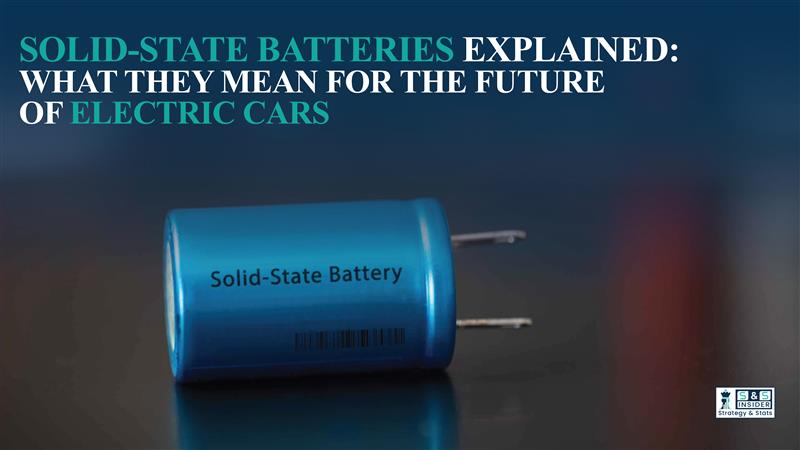
Solid-state batteries are evolving as a revolutionary technology powering even affordable electric vehicles (EVs) by 2025, promising to address many limitations of traditional lithium-ion batteries and accelerate mainstream EV adoption.
Unlike conventional lithium-ion batteries that work on liquid electrolytes, solid-state batteries (SSBs) use solid electrolytes, offering important improvements in energy density, safety, lifespan, and charging speed. All these developments are essential as the EV market expands beyond the finest models into more affordable segments, making electric mobility accessible to a wider population.
Why Solid-State Batteries are Beneficial for Electric Cars?
Higher Energy Density: SSBs contain more energy in the same space, enabling EVs to travel further per charge. Some models may reach ranges exceeding 600 miles, effectively improving range, which deters many consumers from swapping EVs today.
Faster Charging: The solid electrolyte makes it easier for ions to move around, so SSBs may charge up to 80% of their capacity in just 10 to 15 minutes. This directly competes with the ease of recharging with gasoline. This significantly reduces waiting time and increases usability.
Improved Safety: SSBs do not catch fire, so there are no battery fires or overheating like there are with liquid electrolyte lithium-ion cells. This enhances vehicle safety and reduces the requirements for complex management systems.
Longer Lifespan: Solid-state batteries have longer discharge times with 90%+ capacity holding even after over 2,000 charge cycles, potentially doubling the lifespan of current EV batteries and reducing the frequent replacement costs. Big companies including Toyota are already offering extended warranties considering the importance of SSBs.
Environmental Benefits: Their simpler manufacturing process and longer lifespan result in a lower carbon footprint in comparison to the traditional lithium-ion batteries.
Impact on the Current Solid-State Battery Industry:
This transition will transform all the current EV standards, vehicles will have smaller battery packs, will make longer trips without repetitive recharging, and offer faster refueling times. The used EV market will also benefit, as longer battery life improves resale values by reducing uncertainties over battery degradation. Furthermore, improved range and safety possibly will convince more consumers to switch from combustion engines to electric alternatives, increasing EV market share significantly.
Key Features:
Due to their compact design, solid-state batteries can significantly shrink the size and weight of battery systems. That is a big success for electrifying bigger vehicles, such as SUVs and commercial trucks, where space and weight are important. Another huge advantage is fast charging, some solid-state batteries can charge in under 15 minutes, making them much more practical for long road trips or time-sensitive commercial applications. These batteries could go beyond just powering vehicles. Due to their efficiency and ability to handle two-way energy flow, they might also be used to support the power grid, fundamentally turning cars into mobile energy hubs.
Future of Solid-State Batteries for Electric Cars:
If you look at where things are headed, a lot of experts think solid-state battery production might reach around 100 GWh by 2035, which would give them a decent chunk of the EV battery market. But the road there is not exactly easy. Scaling up and getting the costs down are still major sticking points, and until those are figured out, it is going to be tough for solid-state to compete with how cheap lithium-ion has become.
While lithium-ion batteries are getting cheaper, solid-state options still have some catching up to do. That said, some estimates suggest we could see price parity as early as the late 2020s or sometime in the 2030s. Despite encounters, the technology's long-term promise is substantial. Solid-state batteries can become the conventional standard, powering the new generation of EVs that are safer, more affordable, and far more practical for ordinary users.
In conclusion, as solid-state batteries start showing up in more budget-friendly EVs, they could finally tackle some of the biggest issues including safety, limited driving range, and long charging times. Their rollout could really shake up the market, making electric vehicles not just more practical and affordable, but also a bigger part of the push toward greener, more sustainable transportation.
Source - EVmechanica